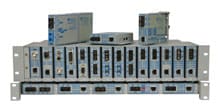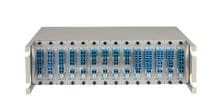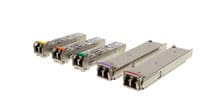- Products
- PoE Media Converters and Switches
- Ethernet & PoE Switches Product Selector
- Multi-Gigabit Ethernet and PoE Switches
- PoE PSE Commercial Switches
- PoE PSE Industrial Fiber Switches
- PoE Industrial Copper Extenders
- PoE Powered Media Converters
- PoE PSE Media Converters
- PoE Extenders & Injectors Product Selector
- Pluggable Transceivers Product Selector
- Product Lines

- iConverter Managed Multi-service Platform
- Copper to Fiber Media Converters
- Ethernet Media Converters
- 10 Gigabit Copper-to-Fiber
- 10/100/1000 Copper to 10 Gigabit Fiber
- 10/100/1000 Copper-to-Fiber with Integrated Management
- 10/100/1000 Industrial Copper-to-Fiber with Integrated Management
- 10/100/1000 Copper-to-Fiber with VLAN
- 10/100/1000 Dual Media Converter with VLAN
- Gigabit Copper-to-Fiber
- 10/100 Copper-to-Fiber with Integrated Management
- 10/100 Industrial Copper-to-Fiber with Integrated Management
- 10/100 Copper-to-Fiber with VLAN
- 10/100 Copper-to-Fiber
- Fast Ethernet Copper-to-Fiber
- Fast Ethernet Redundant Links
- 10Mbps Copper-to-Fiber
- 10Mbps Copper to Coax
- TDM Media Converters
- Serial Media Converters
- Ethernet Media Converters
- Fiber to Fiber Media Converters
- 10 Gigabit Fiber-to-Fiber Converter and Transponder
- 10 Gigabit Industrial Converter and Transponder
- SFP-to-SFP Fiber Converter and Transponder
- SFP-to-SFP Industrial Fiber Converter and Transponder
- Gigabit Fiber to-Fiber with 3 Rs
- 100/1000 Fiber-to-Fiber with 3 Rs
- Gigabit Fiber-to-Fiber
- Fast Ethernet Fiber-to-Fiber with 3 Rs
- Fast Ethernet Fiber-to-Fiber
- OC-3/STM-1 Fiber-to-Fiber
- OC-12/STM-4 Fiber-to-Fiber
- Carrier Ethernet Network Interface Devices
- CE 2.0 - 10G Demarcation NID
- CE 2.0 - 10G Demarcation and Aggregation NID
- CE 2.0 - 10/100/1000 Mult-port NID
- CE 2.0 - 10/100/1000 Mult-port NID with PoE
- CE 2.0 - 10/100/1000 8-Port NID
- SFP NID - Gigabit SFP NID
- microNID - 100/1000 compact NID
- CE 1.0 Service OAM - 10/100/1000 NID
- CE 1.0 Link OAM - 10/100/1000 Copper-to-Fiber NID
- CE 1.0 Link OAM - 10/100 Copper-to-Fiber NID
- CE 1.0 Link OAM - Gigabit Fiber-to-Fiber NID
- CE 1.0 Link OAM - Fast Ethernet Fiber-to-Fiber NID
- CWDM Multiplexers
- T1/E1 Multiplexers
- Ethernet Switch Modules
- Management System
- Chassis Options

- 1-Module Industrial Chassis
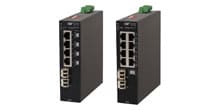
- RuggedNet Industrial Switches and Extenders
- Industrial PoE PSE Fiber Switches
- Multi-Gigabit Managed Industrial PoE+/BT Switches
- Multi-Gigabit Unmanaged Industrial PoE+/BT Switches
- 10G Managed 802.3bt PoE Switches
- 10G Unmanaged 802.3bt PoE Switches
- 10G Managed PoE+ Switches
- 10G Unmanaged PoE+ Switches
- 1G Managed PoE+ Switches
- 1G Unmanaged PoE+ Switches
- 1G Unmanaged 802.3bt PoE Switches
- 1G Managed 802.3bt PoE Switches
- Industrial Ethernet Switches
- Industrial PoE Copper Extenders
- Industrial Power Supplies

- OmniConverter Media Converter, Switches and Extenders
- PoE PSE Media Converters
- 10G Multi-Gigabit / Multi-Rate PoE Media Converter
- 10G Multi-Gigabit / Multi-Rate Media Converter
- 10/100 Multi-port PoE+ Media Converter
- 10/100 PoE+ Media Converter
- 10/100/1000 Multi-Port PoE+ Media Converter
- Industrial 10/100/1000 Multi-Port PoE+ Media Converter
- 10/100/1000 PoE+ Media Converter
- 10/100/1000 PoE++ 60W-100W Media Converter
- Industrial 10/100 Multi-port PoE+ Media Converter
- 1U Rack-Mount Shelf
- PoE PSE Compact Switches
- Multi-Gigabit Managed PoE+/BT Switches
- Multi-Gigabit Unmanaged PoE+/BT Switches
- 10G Managed 802.3bt PoE Switches
- 10G Unmanaged 802.3bt PoE Switches
- 10G Managed PoE+ Switches
- 10G Unmanaged PoE+ Switches
- 1G Managed PoE+ Switches
- 1G Unmanaged PoE+ Switches
- 1G Managed 802.3bt PoE Switches
- 1G Unmanaged 802.3bt PoE Switches
- Ethernet Switches
- PoE Copper Extenders
- Single Pair Ethernet Converters
- PoE Injectors
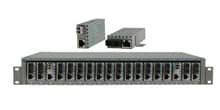
- miConverter Unmanaged Miniature Media Converters
- 10/100/1000 Copper-to-Fiber
- Industrial 10/100/1000 Copper-to-Fiber
- 10/100/1000 Ultra-Compact Copper-to-Fiber
- Gigabit Copper-to-Fiber
- 10/100/1000 Copper-to-Fiber PoE Powered
- 10/100 Copper-to-Fiber
- 10/100 Ultra-Compact Copper-to-Fiber
- 10/100 Copper-to-Fiber PoE Powered
- 18-Module Chassis
- Industrial 10/100 Copper-to-Fiber PoE Powered
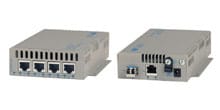
- FlexSwitch Compact Switches
- Solutions
- Company
- Support
- How to Buy
Building a Scalable Network by Daisy-Chaining PoE Switches

In today's fast-paced digital landscape, network scalability is crucial for businesses aiming to maintain seamless connectivity. As businesses grow, so do their networking requirements. One of the most efficient ways to scale a network is by daisy-chaining Power over Ethernet (PoE) switches. This method offers flexibility, cost-effectiveness, and ease of deployment. Let's explore everything you need to know about building a scalable network by daisy-chaining PoE switches.
What is Daisy-Chaining in Networking?
Daisy-chaining in networking refers to connecting multiple devices (in this case, PoE switches) in a linear series. Each switch is linked to the next in this configuration, forming a chain. This setup allows for efficient data and power transmission across multiple devices without requiring additional cables or complex infrastructure.
Understanding Power over Ethernet (PoE) Technology
PoE technology enables network cables to carry electrical power along with data. This capability is particularly useful for devices such as IP cameras, VoIP phones, and wireless access points, which can receive both data and power through a single cable. By integrating PoE switches into your network, you can reduce the need for separate power supplies, thereby simplifying network design and installation.
Why Choose Daisy-Chaining for Network Scalability?
Daisy-chaining offers several advantages for businesses looking to scale their network infrastructure:
- Cost-Efficiency: Daisy-chaining reduces the need for extensive cabling and additional network devices, making it a cost-effective solution.
- Flexibility: Without requiring major adjustments to the current infrastructure, additional switches can be added to the network as needed.
- Simplified Management: A single connection point allows for easier monitoring and management of network devices.
- Space-Saving: Minimize clutter by reducing the number of cables and power sources required.
How to Daisy-Chain PoE Switches
Choose the Right PoE Switches
When selecting PoE switches for daisy-chaining, consider port count, power budget, and PoE standards (e.g., IEEE 802.3af, 802.3at, 802.3bt). The switches should support sufficient power output for all connected devices.
Connect the Switches in Series
Start by connecting the first switch's uplink port to the router or core network. Next, link the first switch to the second using one of the regular Ethernet ports. Repeat this process to chain additional switches.
Test Network Performance
After setting up the daisy-chain, perform tests to ensure that data flow and power delivery are consistent across all switches. Monitor network latency, bandwidth usage, and device connectivity to optimize performance.
Monitor and Manage the Network
Implement network management tools to monitor the health of each switch in the chain. This helps quickly identify issues like power overloads or data bottlenecks, allowing for proactive troubleshooting.
Common Challenges When Daisy-Chaining PoE Switches
While daisy-chaining PoE switches is a powerful solution, it does come with some challenges:
Power Limitation
Each switch has a specific power budget, which could become a bottleneck if too many devices are connected. Carefully plan the power distribution to avoid overloads.
Bandwidth Bottlenecks
As the chain grows, the risk of bandwidth congestion increases, especially if high-traffic devices are involved. Mitigate this by implementing quality of service (QoS) settings and balancing traffic loads.
Network Latency
Adding multiple switches in a chain can increase latency, which may impact real-time applications. Ensure that the switches can handle the required data throughput without significant delays.
Single Point of Failure
In a daisy-chain configuration, if one switch fails, it can affect all devices downstream. Redundant paths or failover mechanisms should be considered to enhance network reliability.
Best Practices for Daisy-Chaining PoE Switches
To make the most of daisy-chaining, consider the following best practices:
Limit the Number of Switches in the Chain
Ideally, limit the number of switches to avoid performance degradation. A typical recommendation is to daisy-chain no more than three to four switches.
Use Managed Switches
Managed switches offer advanced features like VLANs, traffic prioritization, and better monitoring capabilities, which are crucial in larger networks.
Optimize Cabling
Use high-quality Ethernet cables (Cat5e, Cat6, or better) to ensure optimal data transmission and power delivery. Proper cabling also minimizes signal loss and interference.
Plan for Future Expansion
When designing your network, plan for future growth. Consider the scalability of your switches and ensure that your power budget can handle additional devices as your network expands.
When Should You Consider an Alternative to Daisy-Chaining?
While daisy-chaining is an excellent solution for many scenarios, there are times when alternative approaches might be more suitable:
Large-Scale Networks
A more complex architecture, like a star or tree topology, might offer better performance and reliability for extensive networks.
High Traffic Environments
A daisy-chain configuration could lead to congestion if your network supports bandwidth-intensive applications (e.g., video streaming or large data transfers). In such cases, a dedicated switch hierarchy may be more effective.
Critical Applications
For mission-critical applications where downtime is unacceptable, a more redundant setup with multiple paths for data and power flow is recommended.
FAQs
How many PoE switches can I daisy-chain together?
Limiting daisy-chaining to three or four switches is generally recommended to avoid power distribution issues and bandwidth bottlenecks.
Can daisy-chaining affect network performance?
If not properly managed, daisy-chaining can lead to latency and bandwidth congestion, particularly in high-traffic environments.
What is the maximum distance for daisy-chaining PoE switches?
The maximum distance is typically 100 meters (328 feet) between each switch, following standard Ethernet limitations. If the switches have multiple fiber ports, then you can also daisy chain the switches with fiber for long distance runs between switches.
Do I need managed switches for daisy-chaining?
While not mandatory, managed switches provide better control over your network and allow for advanced configurations like QoS and VLANs, which can benefit daisy-chained setups.
Is daisy-chaining suitable for large networks?
Daisy-chaining is best suited for small to medium-sized networks. More complex topologies may be required for larger networks to maintain performance and reliability.
Conclusion: Scaling Your Network with Daisy-Chained PoE Switches
Daisy-chaining PoE switches provide a versatile and cost-effective way to scale your network infrastructure. By following best practices and understanding the potential challenges, you can create a network that is both scalable and robust. Whether managing a small business or expanding a large enterprise, daisy-chaining offers the flexibility to adapt to changing networking needs.
Omnitron Systems offers a range of PoE switches designed for efficient and reliable daisy-chaining:
- High-Performance Switches: Our switches deliver exceptional performance even in daisy-chained configurations.
- Power Budget Optimization: Our switches provide ample PoE power budgets to accommodate multiple devices.
- Advanced Management Features: Our network management tools help you monitor and optimize your daisy-chained network.
With the help of best practices and Omnitron's high-performance PoE switches, you can build a reliable and scalable network that is tailored to your unique requirements.
Would you like to discuss a specific scenario where you're considering daisy-chaining PoE switches? Call us now!

